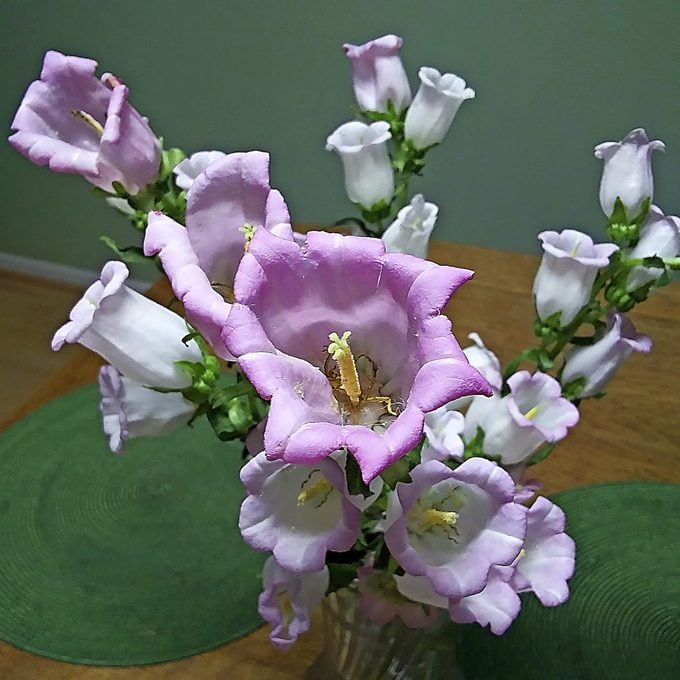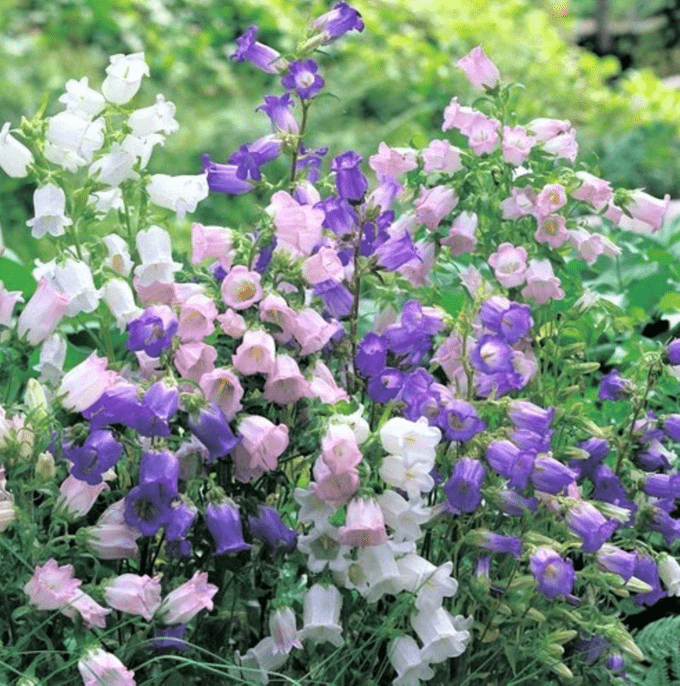How to Grow Canterbury Bells Flowers
Updated: Mar. 25, 2024
Learn why you should add canterbury bells flowers to your garden beds and get expert tips on how to grow these biennial blooms.
How to Grow Canterbury Bells

“What are these flowers in my bouquet?” asks Birds & Blooms reader Pamela Holland of Williamsburg, Ohio.
Garden expert Melinda Myers says, “These canterbury bells (Campanula medium) are often used in flower arrangements and can be grown in gardens. The plant is biennial—it produces just a rosette of leaves the first year before flowering, setting seed and dying in the second year.
Since it is hardy in Zones 3 to 9, you can grow this in your Ohio garden. Plant in full to partial sun with moist, well-draining soil. Gardeners in hotter regions need to provide some afternoon shade for these flowers. Cover the first-year leaves with evergreen boughs or straw after the ground freezes in winter to increase overwintering success. Stake the plants in their second year or grow them in small groupings so they support each other.”
- Common name: Canterberry bells
- Scientific name: Campanula medium
- Zones: 3 to 9
- Soil: Moist, well-draining soil
- Light needs: Full sun to partial sun
- Attracts: Bees, butterflies, hummingbirds

These bell-shaped flowers are easy to grow from seeds, however you will not see blooms until the second growing season. Direct sow seeds after the last frost; do not cover the seeds with soil but water regularly.
Allow some flowers to freely reseed and you will see blooms in future years. Note that canterbury bells plants are resistant to deer and rabbits.
You may also see second-year biennial stock available in nursery containers at garden centers. Other biennials to look for include sweet William and foxglove.
Next, check out the top 10 old fashioned flowers to grow.
About the Expert
Melinda Myers is the official gardening expert for Birds & Blooms. She is a TV/radio host, author and columnist who has written more than 20 gardening books. Melinda earned a master’s degree in horticulture from the University of Wisconsin-Madison.
Why Trust Us
For nearly 30 years, Birds & Blooms, a Trusted Media Brand, has been inspiring readers to have a lifelong love of birding, gardening and nature. We are the #1 bird and garden magazine in North America and a trusted online resource for over 15 million outdoor enthusiasts annually. Our library of thousands of informative articles and how-tos has been written by trusted journalists and fact-checked by bird and garden experts for accuracy. In addition to our staff of experienced gardeners and bird-watchers, we hire individuals who have years of education and hands-on experience with birding, bird feeding, gardening, butterflies, bugs and more. Learn more about Birds & Blooms, our field editor program, and our submission guidelines.





















